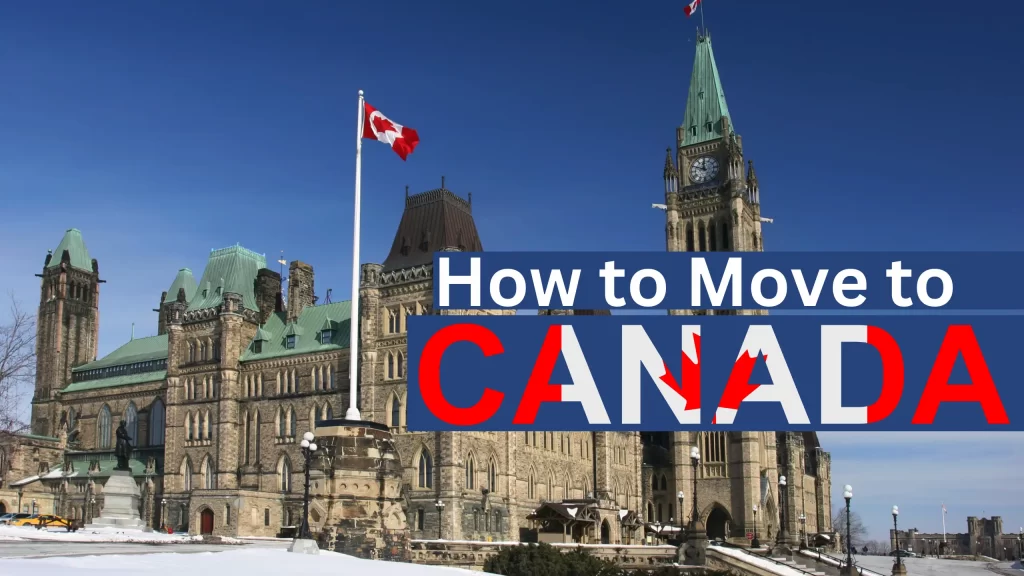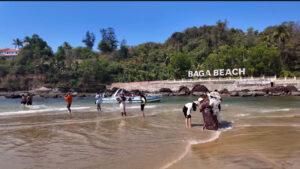Canada remains a top destination for immigrants due to friendly immigration policies, high quality of life, and availability of jobs. Although immigrating to Canada involves a long process, some immigration programs are easier than others. Entire process of moving to Canada, including the immigration programs, eligibility, steps, and tips for a smooth transition.
Canada, by far, is one of the most popular countries in the world for immigrants. According to the Immigration Office, 341,180 permanent residents moved to Canada, and 74,586 individuals transitioned from a temporary residence to permanent residency, only in 2019. With so many demands for immigration, Canada has created a few pathways to make the moving process more manageable and straightforward.
Why Choose Canada?
What is Immigration?
Requirements for Immigrating to Canada
How Much Money Do You Need to Immigrate to Canada?
Aside from the economic programs, there are also pathways for foreigners to immigrate to Canada for studies or to reunite with family members.
Easiest ways to immigrate to Canada now are:
- Family Sponsorship.
- Provincial Nominee Programs (PNP).
- Express Entry Programs.
- Business Immigration Programs.
- LMIA Work Route (Immigrate with a job offer).
Each pathway presents a relatively easy way to obtain permanent residency with varying requirements. However, the family sponsorship has less stringent personal requirements, provided that you have a qualifying family member sponsoring your migration to Canada.
Express Entry program is quite straightforward but highly competitive due to the point-based Comprehensive Ranking System (CRS). So, it can be challenging to meet the qualifications. The Provincial Nominee Program offers a more accessible alternative.
Why Choose Canada?
With our rich history of immigration, Canada is a well-known multicultural country, which respects the contributions and individuality of different cultures. Canada never stops seeking skilled and talented newcomers to support the development of the Canadian economy. Canada is home to many immigrants from all over the world.
Today, Canada still attracts many newcomers because of our:
- Natural beauty, wide-open spaces, mountains, trees, and lakes
- Free society with fundamental human rights enshrined in a Charter of Rights and Freedoms
- Political stability with excellent business opportunities and a strong banking system
- Free trade with United-States and Mexico under NAFTA agreements
- Education system with an excellent international reputation of Canadian Universities
- Excellent healthcare system and generous network of social assistance programs
- One of the nicest countries in the world with excellent business opportunities
The Canadian government understands the difficulty for newcomers/immigrants to adapt to a new country, to learn new cultures and languages; therefore, the Government of Canada, Provincial Governments, and many public/private community organizations work together to provide assistance in such areas as language training, finding employment, education, finding a place to live and much more. Please click here to view Newcomers assistance site.
What is Immigration?
Immigration is the process of moving to a foreign country to live permanently or for an extended period. People immigrate for various reasons, including better job opportunities, education, family reunification, or escaping conflicts. Immigration policies vary by country and may involve visas, work permits, or residency applications.
Pathways Immigration
Pathways Immigration offers trusted and streamlined solutions for individuals and families looking to move to Canada through various immigration programs.
Canada offers several immigration options tailored to different needs. Selecting the right program is essential as it sets the foundation for your application. Overview of the most popular immigration pathways:
- Express Entry System: This is the most common route for skilled workers. The Express Entry system is based on a points-based ranking system known as the Comprehensive Ranking System (CRS). It is suitable for individuals with work experience, high education, and language proficiency.
- Provincial Nominee Program (PNP): If you have specific skills that are in demand in a particular province, this program may be your best option. Each province has its own criteria for immigration, and applying through a PNP can increase your chances of being invited to apply for permanent residency (PR).
- Family Sponsorship: If you have a spouse, parent, or child who is a Canadian citizen or permanent resident, they can sponsor you for immigration. This is an excellent way to reunite with loved ones.
- Study & Post-Graduation Work Permit (PGWP): For international students, studying in Canada can be a great pathway to permanent residency. After completing a study program, you may be eligible to apply for a PGWP to gain work experience.
- Work Permits: If you’re planning to work temporarily in Canada, you can apply for a work permit. This can be either an LMIA-based work permit (if your employer needs to prove there’s no Canadian worker available) or an LMIA-exempt work permit.
- Business & Investor Immigration: For entrepreneurs and investors looking to start a business in Canada, there are specific programs designed to encourage business growth and investment. This route can provide a pathway to permanent residency.
To help applicants secure permanent residency or citizenship. Backed by experienced immigration consultants and a deep understanding of Canadian policies, Pathways Immigration is a reliable choice for those seeking a smooth and legal transition to life in Canada.
Requirements for Immigrating to Canada
Each Canadian immigration program has unique eligibility criteria. Ensure you meet the eligibility requirements for the specific program of interest before applying. The general requirements may include:
- Applicants must be 18 or older for economic immigration programs. Those between the ages of 25 and 35 receive the highest points.
- Proficiency in English or French, depending on your preferred settlement region.
- Minimum of senior secondary education.
- Minimum of one year of relevant work experience (for economic programs). Specific programs may require more.
- Meet the minimum points requirement on the CRS.
- Settlement funds of at least 13,757 CAD for a single applicant in the Express Entry Program.
- Clean criminal record.
- Connections to Canada.
Family sponsorship and humanitarian immigration pathways do not operate a point-based ranking system.
Find a Suitable Immigration Pathway
| Express Entry Program | Express entry program is the quickest way to get permanent residency in Canada. However, you must be a highly skilled individual to get into this program. The pathway is points-based, and you will be scored on your experience, qualifications, education, and skills. |
| Federal Skilled Worker Program | This is a stream within the express entry program. The minimum requirement for this stream is having at least 10 years of work experience in managerial jobs, professional jobs, and technical and skilled trades. |
| Federal Skilled Trades Program | Before applying for this stream, you need to have at least two years of work experience in a skilled trade within 5 years. You must also meet the language requirements for each skill (speaking, reading, writing, listening). |
| Provincial Nominee Program | To get into this program, you have to be nominated by a province in Canada and meet the eligibility requirements. Keep in mind that each province targets specific groups such as students, skilled workers, business people, and semi-skilled workers. |
| Quebec Selected Skilled Workers | This immigration program is specifically for those who want to live in Quebec. To get this permit, you have to apply to the Government of Quebec for a Quebec Selection Certificate and follow their guidelines. |
| Atlantic Immigration Program | With this immigration program, you can move only to Atlantic Canada, which includes the territories of New Brunswick, Nova Scotia, and Prince Edward Island, Newfoundland, and Labrador. |
| Self-Employment Visa | You have to provide evidence that you can be self-employed in Canada and have enough relevant work experience in cultural activities or athletics. |
| Start-Up Visa | For the start-up visa, you must have a qualifying business idea and a letter of support from a designated organization. Additionally, you have to meet the language requirements, and your business must generate enough money to settle in Canada. |
Apply for the Permit?
Once you know what type of visa you need, you can begin the Canadian visa application process. First, you need to create an online account on Canada’s immigration website, and then answer a few questions to determine your eligibility for the visa. If you are eligible, you have to provide your email so you can receive instructions for your specific visa type, a list of required documents, and a reference code. Take note of the reference number since you will need it for the remainder of your application.
Then, you will receive instructions on how to submit your application, online or in person:
- If you can submit your application online, then you have to either create a Government of Canada login (GCKey) account or use your banking details (if applicable).
- For in-person applications, you have to prepare your documents and submit them to a local Canadian representative office in your country of residence.
Also, get ready to submit the application fee for your visa. Keep in mind that the fees change depending on what type of visa you are applying for, and you may be required to pay additional fees for translation and courier services.
Once you know which program to apply for and meet the eligibility criteria, it’s time to prepare and submit your application.
Different Types of Legal Residency in Canada
There are several types of legal residency in Canada, including permanent residence, family sponsorship, and the Provincial Nominee Program (PNP).
- Family Sponsorship.
- Provincial Nominee Programs (PNP).
- Express Entry Programs.
- Business Immigration Programs.
- LMIA Work Route (Immigrate with a job offer).
Family Sponsorship
Canada supports family reunification, allowing permanent residents and citizens 18 years and above to sponsor their dependent family members to Canada. It makes family sponsorship one of the easiest ways to migrate to Canada. Family members eligible for sponsorship include:
- Spouse or common-law partner.
- Unmarried conjugal partner.
- Dependent children under 22 years who are neither married nor in a common-law partnership.
- Children above 22 years who are financially dependent due to a physical or mental disability.
- Parents and grandparents.
- Orphaned siblings and close relatives.
If you have a family member who is a Canadian citizen or permanent resident, the family sponsorship pathway may be the fastest route for you to immigrate to Canada. However, you must provide sufficient proof of relationship with the sponsoring family member.
Moving to Canada through family sponsorship costs about CAD 1,365. There may be additional fees if the family member resides in Quebec. Processing of a family sponsorship visa can take up to one year.
Provincial Nominee Programs (PNPs)
Canada’s thirteen provinces and territories have varying populations and labour force needs. Therefore, each province is allowed to nominate foreign skilled workers for permanent residency to meet the labour demands within the region.
The Provincial Nominee Program route is one of the most popular pathways for immigrating to Canada. Plus, it is an easier migration route for those who score low on the CRS.
Each province offers several PNPs with specific eligibility models and requirements based on its labour market and Occupation in Demand (OID) needs. Obtaining PR through this route means you must reside and work in the province that nominated you. The provinces and territories currently offering Provincial Nominee Programs include:
- Yukon
- Saskatchewan
- Ontario
- Prince Edward Island
- Nova Scotia
- Newfoundland and Labrador
- Northwest Territories
- Manitoba
- British Columbia
- New Brunswick
- Alberta.
You can apply directly to a province for a nomination or via the Express Entry procedure for provincial programs managed by Express Entry. A PNP nomination adds 600 points to your CRS score, increasing your eligibility for Canadian permanent residency.
You’ll use the nomination to apply directly for a Canadian PR. If you’re applying via Express Entry, you’ll receive an invitation to apply (ITA) for a PR during the subsequent EE draw once you update your profile with your nomination. Each PNP’s processing time is different, and applications usually cost the same as Express Entry. Depending on the PNP you choose, there may be additional nomination processing fees.
Express Entry (EE) System
The Express Entry system is Canada’s most popular immigration pathway for skilled workers. Over 100,000 foreign workers obtain permanent residency in Canada yearly via the Express Entry system. It is a point-based system that assigns scores to applicants based on critical selection criteria, such as age, education, work experience, and language skills.
There are three streams of immigration programs under the EE system:
- Federal Skilled Worker (FSW) Program – for skilled workers who meet specific education, job experience, and language requirements.
- Federal Skilled Trades (FST) Program – for skilled tradespersons with Canadian job offers or valid certificate qualifications.
- Canadian Experience Class – for people with at least three years of Canadian work experience.
If you meet the eligibility criteria for any of these streams, you can create an online EE profile and upload your qualifications. The Comprehensive Ranking System (CRS) tool will assess your profile and assign you a score. The highest-scoring candidates in the EE pool will be selected via a draw every two weeks. IRCC fixes the qualifying score for each draw.
The selected candidates will each receive an Invitation to Apply (ITA), with which they’ll submit their PR application. You can obtain your Canadian PR via the Express Entry route within six months. Even if you don’t qualify for the draws, being in the pool makes you eligible for a PNP nomination.
Business Immigration
If you’re a business owner or have experience running one, this might be the most accessible immigration pathway for you.
Canada offers several business immigration programs for investors, entrepreneurs, and self-employed persons at the federal and provincial levels. These programs offer permanent residency to foreign investors and entrepreneurs who want to start a business in Canada, contributing to its economic development.
To qualify for a Start-up visa, you must prove that your idea is innovative, globally competitive, and will provide jobs for Canadians. An approved designated organization must support your business, and you must have the required funds to start the business.
The required investment amount varies for different programs. Regional entrepreneur programs generally require less investment funds than federal programs.
The self-employed program is also an excellent option if you’re self-employed and have relevant experience in athletics or cultural activities. However, you must prove that your skills and experience will contribute significantly to Canada’s athletic and cultural life.
LMIA Work Route (Immigrate with a job offer)
Receiving a Canadian job offer is another easy way to migrate to Canada. You can apply for a Work visa if you obtain a Canadian job offer. However, your Canadian employer must obtain a positive LMIA (Labour Market Impact Assessment) from the Employment and Social Development Canada (ESDC) for your job offer to be valid.
An LMIA assesses the impact of hiring an overseas worker to fill a position in Canada. A positive LMIA result confirms that your employment was necessary and validates your job offer.
A valid Canadian job offer also increases your Express Entry CRS points. Job offers from embassies, consulates, or high commissions in Canada are not valid for immigration purposes.
Working in Canada
Foreign nationals and non-permanent residents need a work permit to work in Canada. There are three categories of work permits:
- Closed or Employer-specific work permit: It is issued to foreign workers whose immigration to Canada was facilitated by an LMIA job offer. Holders of this permit can only work for the specific employer on the work permit application and may be required to leave Canada upon expiration of their permits. Processing a closed work permit costs CAD 100.
- Bridging open work permit: A temporary permit that allows you to work while waiting for the result of your permanent residence application.
- Open work permit: It allows you to work for any eligible employer in Canada. It is issued to foreign graduates of Canadian Designated Learning Institutes (DLI) and sponsored spouses of work or study permit holders. Processing an open work permit costs CAD 255.
Canadian work permits are typically processed within two to eight weeks. Your work permit will state all applicable conditions for issuance, including the type of work you can do, where you can work, and how long you can work in Canada.
Requirements for Canadian Work Permit
Aside from meeting the requirements for an LMIA job offer and receiving an employment contract, you must meet the following criteria to qualify for a work permit. You must:
- Prove that you’ll leave Canada at the expiration of your permit.
- Prove that you have sufficient funds to support yourself and dependent family members in Canada.
- Have a clean criminal background record.
- Be medically fit. You may be required to undergo a medical examination.
- Prove that you’re coming to work for an eligible employer.
- Provide relevant supporting documents that prove your eligibility to enter Canada.
Documents Required for a Work Permit in Canada
The specific documents you’ll need for a work permit application depend on the type of permit you’re applying for. This includes:
- Valid passport.
- Recent passport-size photographs.
- Completed application forms.
- Curriculum vitae.
- Employment contract (if applicable).
- Labour Market Impact Assessment (if applicable).
- Proof of status in Canada (if applicable).
- Copy of educational qualifications.
- Proof of sufficient financial resources.
- Medical fitness certificate.
- Proof of payment of all applicable processing fees.
- Marriage certificate (if applicable).
Bringing Family to Canada
Most Canadian immigration programs allow successful applicants to immigrate with their family members. However, the family members eligible for inclusion depend on the immigration pathway.
Express Entry and PNPs only allow you to include your spouse and dependent children in your application. However, you can sponsor your parents/grandparents or other dependent family members through the family sponsorship programs.
There are additional processing fees and higher settlement funds requirements when immigrating with family members.
Prepare for the Move
After you submit your application, it may take several weeks to get an answer. The average waiting time is around 6 months, but it may take up to 18 months if you apply in person. Make sure that during this time, you prepare everything you need for the move to Canada.
If you’re planning on shipping your belongings to Canada, you have to make two copies of a detailed list for all your belongings. You have to include items that are coming with you and items which will arrive later, and for those goods where applicable, include the value, make, model, and serial number. To save up to 40% in moving fees, you can get in touch with an international moving company through Sirelo.
Generally speaking, you’re not required to pay taxes for everyday goods and services such as clothing, furniture, jewelry, silverware, family heirlooms, books, computers, musical instruments, etc. But, you have to check the entry requirements to make sure that you have nothing to worry about.
Move to Canada
If your application is approved, you will get an email with a COPR (confirmation of permanent residence) and a permanent residence visa (if an entry visa is required). After you arrive in Canada, you have to use ArriveCan, which you can download in the Apple Store or Google Play- make sure you use the latest version.
You can use Canada’s immigration service to help you settle and adapt to life in Canada. Plus, Canada offers a “Welcome to Canada Guide” to make the transition process easier for you.
Other Ways to Move to Canada
Besides the Express Entry Program, you can move to Canada for family or study purposes:
- Immigration pathway for family reunification. You can apply for family reunification in Canada if you have a spouse/partner or a parent/grandparent in Canada. Other relatives can sponsor you in specific cases.
- Immigration pathway for study purposes. To qualify for a student visa in Canada, you must be enrolled in a valid educational program. Student visas can’t typically be transferred to work or residence visas. Still, after your studies are over, you can apply for a graduate work permit.
Is It Difficult to Move to Canada?
Generally speaking, moving to Canada is not too difficult. Because Canada is open to welcoming new immigrants and offers several immigration programs, it’s easier for you to qualify for one immigration stream. Still, you have to meet the requirements for the pathway you want to apply for.
Also have to keep in mind that while moving abroad may not be too difficult, living in another country is another story; you have to be well prepared financially, mentally, and socially for the move.
Important Things to Know When Moving to Canada
As a new resident in Canada, you have to be aware of a few essential things:
- Renting/Buying in Canada. When you first move to Canada, you can use temporary housing such as hotels, hostels, or Airbnb while you find your footing. Then you can look into a more permanent situation. Renting is always preferred over buying during the initial stage of the move; the average price for a one-bedroom apartment goes around CAD 1,500. But, you have to keep in mind that prices in big cities are much higher than the average.
- Opening a bank account. After you move to Canada, you will need a bank account to complete money transfers and transactions. To open a bank account, you must have an identity card. In your case, a permanent resident card will suffice. To make this easier for you, the following banks offer specific “newcomer” programs:
- National Bank of Canada.
- Bank of Montreal.
- Royal Bank of Canada.
- Canadian Imperial Bank of Commerce.
- Healthcare. Canada offers free healthcare for its citizens and residents, but your national healthcare may not be available until about three months after your move to Canada. For this reason, you should purchase private healthcare for that initial period. Also remember that national healthcare in Canada does not cover all services such as dental care, ambulance services, prescription medications, etc.
- Taxes. In Canada, you have to pay taxes at the federal, provincial, and municipal levels. Income tax is deducted from your salary automatically, but if you’re self-employed, you have to pay your taxes either in a single or several payments. Additionally, in Canada, you are required to pay a sales tax for every purchase you make. So don’t be surprised if the price changes at the cash register when you’re shopping.
How Much Money Do You Need to Immigrate to Canada?
Need at least CAD 13,200 to settle in Canada. This is the average amount covering a single person, but the cost increases if you move with other family members. Should also account for other unexpected expenses that may come up during the moving process, such as entry taxes, shipping costs for your items, document legalization, etc.
The journey to becoming a permanent resident in Canada can seem long and complex, but with the right preparation and guidance, it can also be highly rewarding. Whether through Express Entry or a Provincial Nominee Program, the opportunity to live, work, and thrive in one of the world’s most welcoming countries is within reach. By following the steps outlined above and staying organized throughout the process, you can successfully navigate your path to Canadian permanent residency.
FAQs
1. What are the basic requirements for immigrating to Canada?
To immigrate to Canada, you must meet certain eligibility criteria depending on the immigration program. Basic requirements include having a valid passport, proof of financial support, and meeting health and character requirements.
2. How do I apply for a Canadian visa?
You can apply for a Canadian visa by submitting your application online or through a Canadian Visa Application Center (VAC). The application process involves filling out the necessary forms and providing documents like proof of identity, financial support, and purpose of travel.
3. What is Express Entry?
Express Entry is Canada’s fast-track immigration system for skilled workers. It includes three federal economic programs: Federal Skilled Worker Program, Federal Skilled Trades Program, and Canadian Experience Class. Applicants are invited based on a points system.
4. How long does the immigration process to Canada take?
The processing time depends on the immigration program. Express Entry typically takes 6 months or less, while other programs may take longer.
5. What is the Comprehensive Ranking System (CRS)?
The CRS is a points-based system used in Express Entry to rank candidates for permanent residence. Points are awarded based on factors like age, education, work experience, language skills, and adaptability.
6. Can I immigrate to Canada without a job offer?
Yes, it is possible to immigrate to Canada without a job offer through the Express Entry system, especially if you qualify under the Federal Skilled Worker Program or have significant work experience.
7. What is the Provincial Nominee Program (PNP)?
The PNP allows Canadian provinces and territories to nominate individuals for immigration based on their skills, education, and work experience. It’s an alternative pathway to gaining permanent residency in Canada.
8. Can I apply for Canadian immigration if I am self-employed?
Yes, Canada offers immigration options for self-employed individuals, particularly under the Federal Self-Employed Persons Program, which targets those with experience in cultural or athletic professions.
9. What are the language requirements for Canadian immigration?
Applicants are required to demonstrate proficiency in English or French through recognized language tests like IELTS for English or TEF for French. The required score varies based on the immigration program.
10. How can I increase my chances of being invited to apply for permanent residency?
Increasing your CRS score can improve your chances of being invited for permanent residency. This can be done by improving your language test scores, gaining more work experience, or obtaining a job offer or provincial nomination.
11. How do I get a work permit in Canada?
A work permit can be obtained by having a valid job offer from a Canadian employer. Some work permits are employer-specific, while others may be open to multiple employers.
12. What are the healthcare benefits for immigrants in Canada?
New immigrants are eligible for healthcare coverage under Canada’s public health system. Each province and territory manages its own healthcare program, so the specific benefits may vary.
13. Can my family accompany me when I immigrate to Canada?
Yes, you can include your spouse, children, and other eligible family members in your immigration application, depending on the program.
14. Do I need to take an IELTS exam to immigrate to Canada?
For most immigration programs, an English proficiency test like IELTS is required. However, if you are proficient in French, you can take the TEF (Test d’Évaluation de Français) instead.
15. How much money do I need to immigrate to Canada?
The amount of money you need depends on the immigration program and the size of your family. Generally, applicants must show proof of funds to support themselves and their family members upon arrival.
16. Can I immigrate to Canada as an entrepreneur or investor?
Yes, Canada offers immigration programs for entrepreneurs and investors, including the Start-Up Visa Program and Provincial Nominee Programs for business people.
17. What is the Atlantic Immigration Pilot Program?
The Atlantic Immigration Pilot is a program designed to attract skilled workers and international graduates to the four Atlantic provinces (Nova Scotia, New Brunswick, Prince Edward Island, and Newfoundland and Labrador).
18. Can I apply for permanent residency in Canada if I have a criminal record?
Individuals with a criminal record may still be eligible to immigrate, but they must undergo a criminal admissibility process. Serious crimes can result in the refusal of an application.
19. How do I know if I qualify for Canadian immigration?
You can use Canada’s Come to Canada tool on the official website to check if you meet the requirements for immigration. This tool assesses your qualifications for various immigration programs.
20. Can I sponsor a relative to come to Canada?
Yes, Canadian citizens and permanent residents can sponsor certain family members, including spouses, dependent children, and other eligible relatives, to immigrate to Canada.










